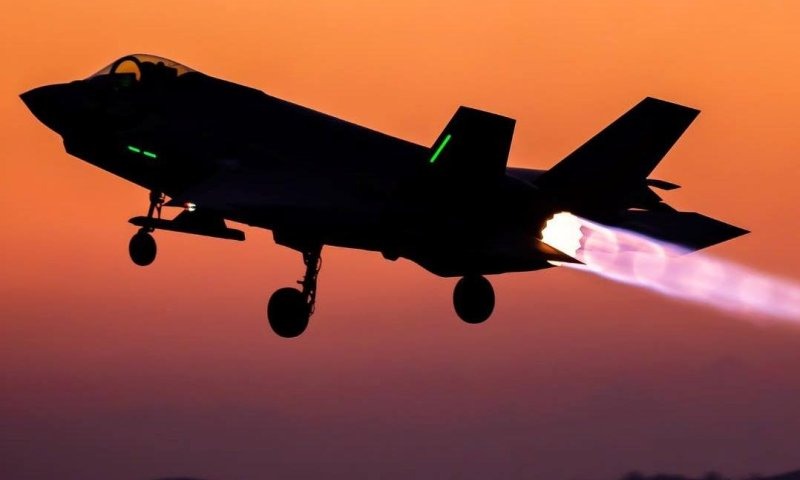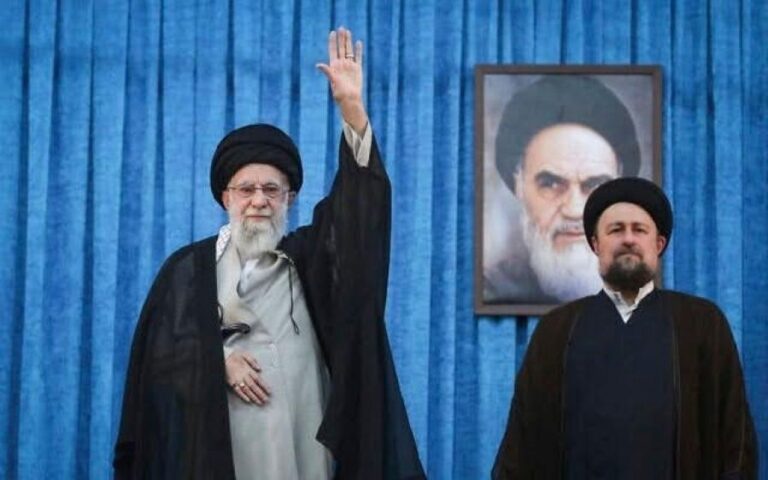The United States has spent a record of at least $17.9 billion on military aid to Israel since the war in Gaza began and led to escalating conflict around the Middle East, according to a report for Brown University’s Costs of War project, released Monday on the anniversary of Hamas’ attacks on Israel.
An additional $4.86 billion has gone into stepped-up U.S. military operations in the region since the Oct. 7, 2023, attacks, researchers said in findings first provided to The Associated Press. That includes the costs of a Navy-led campaign to quell strikes on commercial shipping by Yemen’s Houthis, who are carrying them out in solidarity with the fellow Iranian-backed group Hamas.
The report – completed before Israel finally began fighting back against Hezbollah – is one of the first tallies of estimated U.S. costs as the Biden administration backs Israel in its conflicts in Gaza and Lebanon and seeks to contain hostilities by Iran-allied armed groups in the region.
The financial costs were calculated by Linda J. Bilmes, a professor at Harvard’s John F. Kennedy School of Government, who has assessed the full costs of U.S. wars since the Sept. 11, 2001, attacks, and fellow researchers William D. Hartung and Stephen Semler.
Here’s a look at where some of the U.S. taxpayer money went:
Record military aid to Israel
Israel — a protege of the United States since its 1948 founding — is the biggest recipient of U.S. military aid in history, getting $251.2 billion in inflation-adjusted dollars since 1959, the report says.
Even so, the $17.9 billion spent since Oct. 7, 2023, in inflation-adjusted dollars, is by far the most military aid sent to Israel in one year. The U.S. committed to providing billions in military assistance to Israel and Egypt each year when they signed their 1979 U.S.-brokered peace treaty, and an agreement since the Obama administration set the annual amount for Israel at $3.8 billion through 2028.
The U.S. aid since the Gaza war started includes military financing, arms sales, at least $4.4 billion in drawdowns from U.S. stockpiles and hand-me-downs of used equipment.
Much of the U.S. weapons delivered in the year were munitions, from artillery shells to 2,000-pound bunker-busters and precision-guided bombs.
Expenditures range from $4 billion to replenish Israel’s Iron Dome and David’s Sling missile defense systems to cash for rifles and jet fuel, the study says.
Unlike the United States’ publicly documented military aid to Ukraine, it was impossible to get the full details of what the U.S. has shipped Israel since last Oct. 7, so the $17.9 billion for the year is a partial figure, the researchers said.
They cited Biden administration “efforts to hide the full amounts of aid and types of systems through bureaucratic maneuvering.”
Funding for the key U.S. ally during a war that has exacted a heavy toll on civilians has divided Americans during the presidential campaign. But support for Israel has long carried weight in U.S. politics, and Biden said Friday that “no administration has helped Israel more than I have.”
U.S. military operations in the Middle East
The Biden administration has bolstered its military strength in the region since the war in Gaza started, aiming to deter and respond to any attacks on Israeli and American forces.
Those additional operations cost at least $4.86 billion, the report said, not including beefed-up U.S. military aid to Egypt and other partners in the region.
The U.S. had 34,000 forces in the Middle East the day that Hamas broke through Israeli barricades around Gaza to attack. That number rose to about 50,000 in August when two aircraft carriers were in the region, aiming to discourage retaliation after a strike attributed to Israel killed Hamas political leader Ismail Haniyeh in Iran. The total is now around 43,000.
The number of U.S. vessels and aircraft deployed — aircraft carrier strike groups, an amphibious ready group, fighter squadrons, and air defense batteries — in the Mediterranean, Red Sea and Gulf of Aden has varied during the year.
The Pentagon has said another aircraft carrier strike group is headed to Europe very soon and that could increase the troop total again if two carriers are again in the region at the same time.
The fight against the Houthis
The U.S. military has deployed since the start of the war to try to counter escalated strikes by the Houthis, an armed faction that controls Yemen’s capital and northern areas, and has been firing on merchant ships in the Red Sea in solidarity with Gaza. The researchers called the $4.86 billion cost to the U.S. an “unexpectedly complicated and asymmetrically expensive challenge.”
Houthis have kept launching attacks on ships traversing the critical trade route, drawing U.S. strikes on launch sites and other targets. The campaign has become the most intense running sea battle the Navy has faced since World War II.
“The U.S. has deployed multiple aircraft carriers, destroyers, cruisers and expensive multimillion-dollar missiles against cheap Iranian-made Houthi drones that cost $2,000,” the authors said.
Just Friday, the U.S. military struck more than a dozen Houthi targets in Yemen, going after weapons systems, bases and other equipment, officials said.
The researchers’ calculations included at least $55 million in additional combat pay from the intensified operations in the region.
(AP)












8 Responses
as i have previously said Israel would be better off it had defense options other than the American military industrial complex. Work with south korea, europe and brazil weapon industries would allow competition ie cheaper and better weapons
A record, yet some say that Biden doesn’t support Israel, he should be gebenchted
1. The article said the United States has been helping Israel since 1948. Actually, the United States was strictly neutral until the 1960s, though private citizens (often illegally) assisted Israel. Israel did received military aid from the Soviet Union, and then France, during that period.
2. The Israelis could raise taxes enough to to cover the gap in American aid ceased, but that might lower the standard of living to what it was in the 1950s and 1960s.
3, Those who support the idea of an independent Jewish state need to remember the phrase “He who pays the fiddler, calls the tune”. If President Harris and the (Progressive) Democrats are paying the bills, they, and not the Knesset rule Israel, and Israel is a de facto colony rather than an independent state. one should note the fate of the Afghanis whose elected government was destroyed when Joe Biden decided for reasons reflecting his personal ideology to stab America’s friends in the back and turn the government over to the unelected and widely detested Taliban.
Appeasement indeed costs dearly
America under Biden has done more for Israel than any other country since October 7th. Biden’s support for Israel has cost Democrats votes from large Arab populations in Michigan and Georgia. A recent poll shows Trump polling better than Biden among Arabs because many are upset with Biden’s strong support of Israel. It is truly disgusting that so many are so wedded to the grotesque MAGA ideology that they lack basic hakoras hatov and are full fledged kofoy tov.
The Biden administration has given more money than any other administration in history to Israel. I don’t like him either. But when we talk about the responsibility to have Hakaras Hatov, this is the indisputable facts.
There’s more to be said on this topic, and on the topic that Hakaras Hatov in an obligation that ought to based on facts , not emotions, but I’ll stop here.
Replying to above comments!
Biden is not running for reelection. If he were, it would be a significant issue to consider. His veep is running and she’d be awful for Israel.
People read articles that seem to say things they want to hear with shockingly little critical thought.
I agree that appreciation for what has been given is certainly appropriate.
America has no obligation to help Israel.
On the other hand, I also believe that, as Israel is one of America’s best allies, and its enemies are also sworn to both Israel’s and the US’s destruction, it is in America’s own enlightened self interest to help.
Richard Nixon, an apparently virulent anti-semite (based on recorded conversations) also helped Israel in 1973. The American public was then and still is overwhelmingly pro Israel.
We may also want to remember that some of the aid for Israel, approved by both houses of congress as well as President Biden, was then stone walled and delayed by the White House in an attempt to control Israel’s actions.
The president may or may not be a genuine friend of Israel, but he and the Democrat party have lost no opportunity to criticize and even encourage the removal of PM Netanyahu. They continue to attempt to dictate Israel’s military strategy, and promote some type of moral equivalence between the suffering of the Palestinians – and now the Lebanese – and that of dead, raped and tortured Israelis.
Trump, for all his ridiculous comments and off-putting personality has, AFAIK, been a staunch ally of Israel.
His claim that none of this would have happened if he was still in office sounds bombastic and self-serving. That doesn’t mean it’s not true.